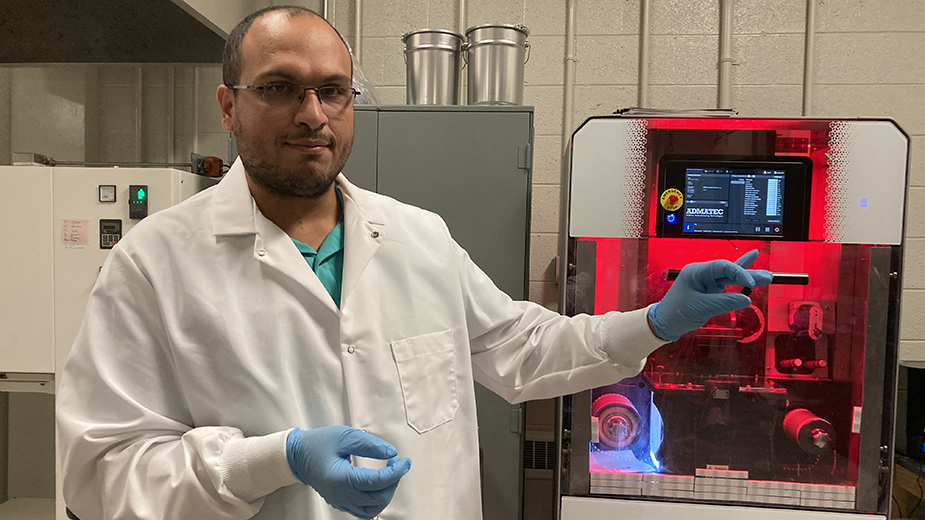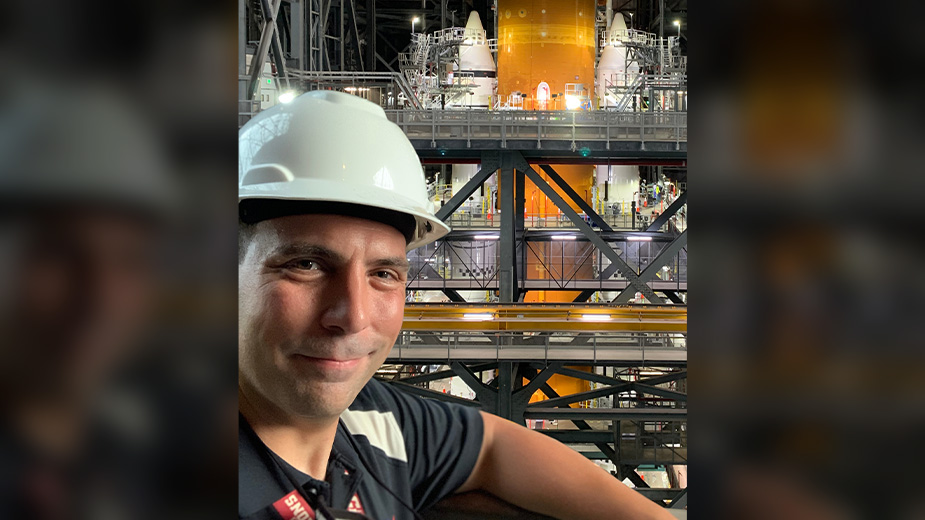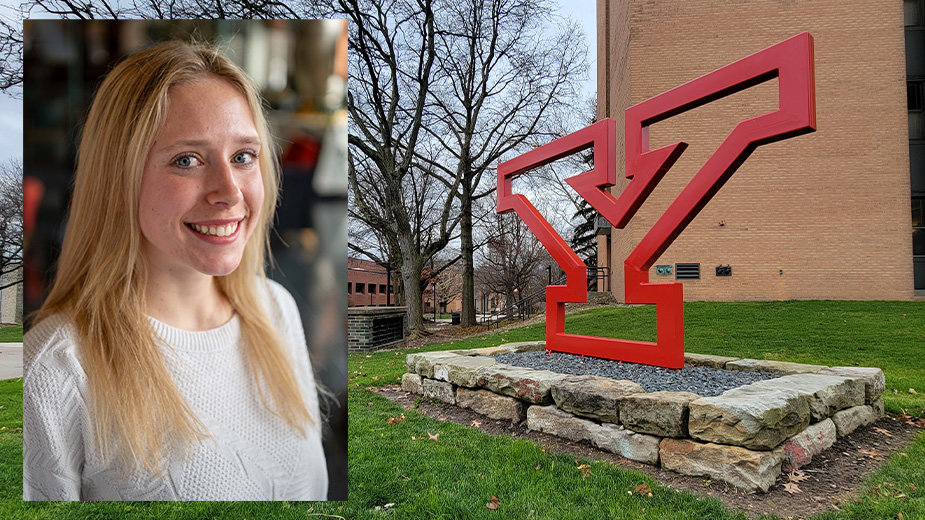Battery Research at YSU Is Out of This World
YOUNGSTOWN, Ohio – A project at Youngstown State University has applications to power habitats on Mars and the moon.
The project involves 3D-printed batteries and the $393,000 that the NASA Marshall Space Flight Center awarded the chemical engineering program at YSU for the work.
This is the second year of the project, says Sina Bakhtar Chavari, a Ph.D. candidate at YSU focusing on materials science engineering.
“Batteries have different parts: anodes, cathodes, electrolytes and separators,” he says. “This project is related to making batteries in outer space. Sending batteries to the moon and Mars is expensive because of the gravity and the materials.”
Anodes and cathodes smooth the flow of the electric charge of a battery. Electrolytes transfer ions and the separator provides a barrier between the anode, which is negatively charged, and the cathode, which is positively charged. It also allows for the exchange from one side to the other. The batteries are heavy so it’s impractical to transport them to space.
Instead, the YSU researchers, who are working with researchers at the University of Texas at El Paso, are developing ways to make the batteries on Mars and the moon by using additive manufacturing.
Rather than use lithium to make the batteries, they’re using sodium.
Pedro Cortes, YSU professor of materials science and engineering, says the research involves using regolith, the material covering bedrock on Mars and the moon. He’s leading the project at YSU.
“Lithium is a scarce metal in outer space,” Bakhtar Chavari says. “On the moon, you can find 10 ppm [parts per million] of lithium. In the same area, you can find 4,000 ppm of sodium. On Mars, the situation is even worse so we need to change the material. Sodium is the solution.”
Sodium is more plentiful and is similar to lithium chemically; the two are close together on the periodic table. Lithium or sodium is the material that performs ion diffusion in a battery and ions can migrate in either material.
“When you are changing from lithium to sodium, you need to change all of them,” Bakhtar Chavari says. “You need to change the anode, the cathode, the separator because they need to work together.”
That means the material used in the anode, cathode and separator must be something that’s available on Mars and on the moon.
The team is researching to find the most effective material for 3D printing the batteries. They’re testing materials including sodium manganese oxide, sodium nickel manganese oxide and sodium vanadium phosphate.
Additive manufacturing – 3D printing – is more effective than the old 2D mode for producing the sodium batteries.
Another advantage of the 3D printing, Bakhtar Chavari says, is that in the conventional kind of batteries, the ions migrate in two dimensions. They’re on a plane.
But 3D adds depth to the migration.
“It gives the batteries more power and energy,” he says. “That’s also the point of making 3D batteries.”
It uses digital light processing that provides higher resolution.
Also, 3D enables the whole device to be printed, which will include the battery, rather than a device that requires a separate battery.
“You can save lots of space. You can make convertible shapes so you can save lots of space and lots of energy,” Bakhtar Chavari says. “Those are the reasons for this project.”
The team is testing the materials comprising the batteries at high temperatures to determine conductivity.
After running tests, YSU sends its samples to the University of Texas at El Paso where its researchers test the materials for electrochemistry at a specific capacity.
“The structure of the material is important because a sodium ion can migrate easier, faster so it gives us higher electrochemistry,” Bakhtar Chavari says.
High porosity, for example, improves electrochemistry.
The work of the YSU team marks the first time that sodium valadium phosphate has been 3D printed in any technology. “That makes it special for us,” Bakhtar Chavari says.
Because the researchers are making the body of the structure of the material for use in outer space, they need to run tests for mechanical performance.
Optimization between designs that give high mechanical and high electrochemistry performance is important.
YSU is working on the anodes and cathodes for the batteries while UTEP researchers are working on the separators. “Two different universities are working on this,” Bakhtar Chavari says.
The university teams meet virtually every week to review their work and process with representatives from the NASA Marshall Space Flight Center.
The battery project is the second NASA award for the YSU program. In 2021, the program earned a grant from NASA to advance research aimed at creating 3D-printed high-temperature sensors. Cortes also led that project.
That research focused on ceramic materials that can be used at extremely high temperatures. The study worked with the NASA Goddard and Marshall Space Flight Centers, using a digital light processing printer funded by the Air Force.
Pictured at top: Sina Bakhtar Chavari, a Youngstown State University Ph.D. student focusing on materials science engineering, shows a cathode, an element of a battery.
Copyright 2024 The Business Journal, Youngstown, Ohio.



